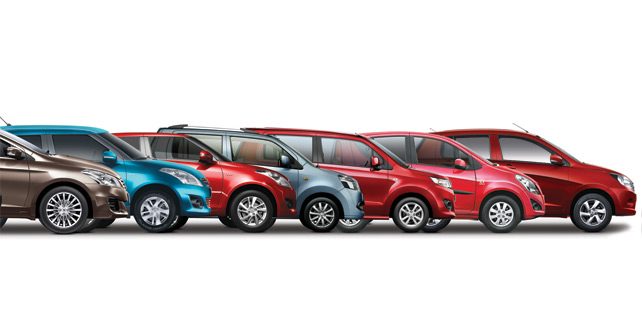
Siddharth feels that Indian car buyers have matured to a point where their own needs now trump what their neighbours will think.
I' ve often wondered about this growing obsession with three-row seating that’s gripped the Indian car market. Sure, to be fair, it’s not just India that sees this phenomenon. But do we really have a good reason for it? Now don’t get me wrong, I’m not oblivious to the needs of the great Indian joint family. Sure, sometimes there has to be room for dada-dadi and cousin Bunty!
But it goes beyond that. In India, no one wants to buy a premium SUV, for instance, without the third row. The irony is that the third row remains folded for the most part. So, in this case, it’s appears to be more to do with social status rather than utilitarian need. But most SUV’s now need to get that darned third row now, since it’s one of those ‘must-haves’ on the customers’ checklist.
And it’s doubly ironic because accessing and using the third row is the most inconvenient in an SUV. Still, there are those like the Mercedes-Benz GL-Class or even the new BMW X5, which do manage it rather well.
But the real segment to look at – which is indeed utilitarian – is the MUV, also called MPV (Multi Purpose Vehicle) outside of India. In India, we’ve always called them Multi Utility Vehicles, because they were more akin to pickup trucks rather than comfortable people-movers. Most of them used ladder-on-frame construction, which meant that for most passengers it really was like the song Shilpa Shetty boogied to in her cameo in Dostana. Yes – Shut Up and Bounce!
But when Toyota gave up the Qualis for the Innova in 2004, it brought in a big change. Suddenly, the MUV was no longer the taxi, or just for the fleet market. It was also a family car. Sure, the Qualis too had achieved this to some extent – but the Innova drove home that point. It established itself as the most comfortable car in its class, despite its ladder-on-frame chassis. And while its rivals have tried – and tried hard – they’ve failed to break its benchmark status.
Until recently that is. The Indian consumer has woken up to the quintessential European style MPV. True, for the longest time, we only had the Maruti Suzuki Ertiga. But now we have the Honda Mobilio too. Car-like comfort, a monocoque chassis, zippy and light feel, and fuel-efficient engines. Plus, the advice I always give the many folks who ask is – think of it as a large hatchback, rather than as an MUV. Why? Going back to my earlier point – how often do dada-dadi or Chunnu-Munnu need to come along for the ride? For the most part, these cars seat 1, 2, or, at best, 4 people. This means that you can keep the third row of seats neatly folded, and use the magnified cargo space as a nice ample boot. It’s perfect for a family with very young children who need to carry a lot of their stuff with them, or someone with dogs who would be much happier with third row air-conditioning and enough space to frolic about.
And this is why I believe we need more such vehicles. See, the preconceived notions about what Indian buyers will or won’t buy are quickly falling by the wayside. From being a buyer who believed in perceptions more than anything, today our buyer is evolving into a more practical person. One who thinks more about what works for her or him, rather than what the neighbours think. Of course, within that they want comfort, ease of use, and yes – good looks too! And since station wagons don’t seem to work here, the MPV is seemingly the perfect solution. So, I would be happy to see more options (which are more like the Ertiga, and less like the Innova) driving in. Hyundai is meant to be perfecting its Grand i10 / Xcent based MPV. Renault is working on one too, and so is Toyota. So, in about a year’s time, we should have many more options. And that, to me, is a good thing. We need more practical cars, and we need them to be compact too. The MPV is the ideal car to meet most of those needs. And don’t forget – many in India like to routinely club them together with the SUV brigade. That only enhances their sex appeal doesn’t it?























Write your Comment